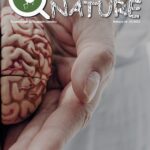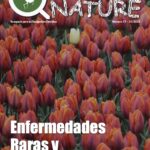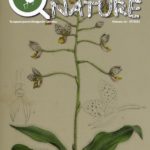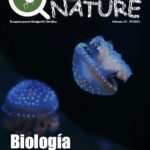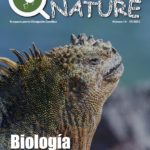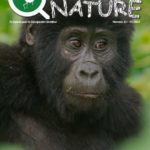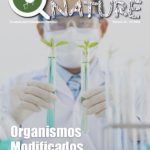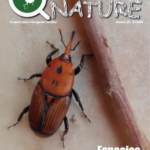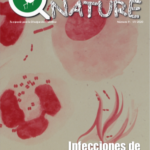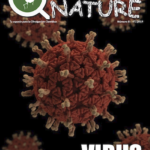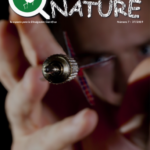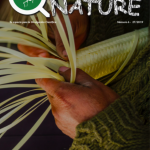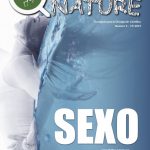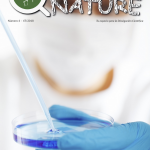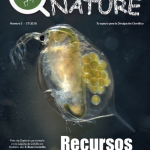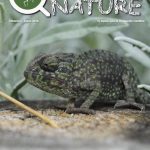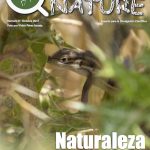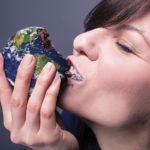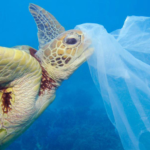Reflexiones sobre la contaminación, el modelo productivo y la crisis del COVID-19
- ATILIO DE LA ORDEN, E. (2009) Contaminación. Editorial científica Universitaria – Universidad Nacional de Catamarca | ISSN: 1852-3013. Disponible en http://editorial.unca.edu.ar/Publicacione%20on%20line/Ecologia/imagenes/pdf/007-contaminacion.pdf
- LE QUERÉ, C.; JACLSON, R.B.; JONES, M.W.; SMITH, A.J.P.; &.; PETERS, G.P. (2020) Temporary reduction in daily global CO2 emissions during the COVID-19 forced confinement. Nature Climate Change. [en línea] | doi: https://doi.org/10.1038/s41558-020-0797-x
- VÁZQUEZ MANZANARES, V.M. (2014) Externalidades y medioambiente. IBEMARK, Revista Iberoamericana de Organización de Empresas y Marketing, 1. pp: 1-15. Disponible en eumed.net/rev/ibemark/02/medioambiente.html.
- PRIETO-SANDOVAL, V.; JACA, C.; ORMAZABAL, M. (2017) Economía circular: relación con la evolución del concepto de sostenibilidad y estrategias para su implementación. Memoria Investigaciones en Ingeniería, 15. pp: 85-97 | ISSN: 2301-1092. Disponible en http://www.um.edu.uy/docs/Economia_Circular.pdf
- REYES, R.; GALVÁN, L.; AGUIAR, M. (2005) El precio de la contaminación como herramienta económica e instrumento de política ambiental. Revista Interciencia, 30(7), 436-441. Disponible en http://ve.scielo.org/scielo.php?script=sci_arttext&pid=S0378-18442005000700010&lng=es&nrm=iso | ISSN 0378-1844
- REKONDO, J. (2020) El COVID-19 y la contaminación. El Diario. Consultado por última vez el 20 de mayo de 2020. Disponible en https://www.eldiario.es/norte/vientodelnorte/Covid-19-contaminacion-ambiental_6_1016708337.html
- CABEZAS, D. (2019) Los viajeros del Metro de Madrid respiran hasta cinco veces más contaminación que en el exterior. El Diario. Consultado por última vez el 20 de mayo de 2020. Disponible en https://www.eldiario.es/madrid/viajeros-Metro-Madrid-respiran-contaminacion_0_876662709.html
El desastre ambiental del Corredor Verde del Guadiamar
- Arenas, J. M., Carrascal, F., & Montes, C. (2008). Breve historia de la construcción del Corredor Verde del Guadiamar. La restauración ecológica del río Guadiamar y el proyecto del Corredor Verde. La historia de un paisaje emergente, 29-64.
- Borja, F., López Geta, J. A., Martín Machuca, M., Mantecón, R., Mediavilla, C., del Olmo, P., Palancar, M. & Vives, R. (2001). Marco geográfico, geológico e hidrológico regional de la cuenca del Guadiamar. Boletín Geológico y Minero. Vol. Especial, 13-34.
- Domínguez, MT., Madejón, P., Marañón, T. & Murillo, J.M. (2010). Afforestation of a trace-element polluted area in SW Spain: woody plant performance and trace element accumulation. Eur J Forest Rest. 129:47-59.
- Domínguez, MT., Marañón, T. & Murillo, J.M., Schulin, R. & Robinson, BH. (2010). Nutritional status of Mediterranean trees growing in a contaminated and remediated area. Water Air Soil Pollut. 205:305-321.
- Marañón, T., & Madejón, E. (2014). El Corredor Verde del Guadiamar como estudio de caso en el proyecto europeo RECARE. Revista Ecosistemas, 23(1), 81-82.
- Rodríguez, A., Marañón, T., Domínguez, MT., Murillo, J.M., Jordano, D., Fernández Haeger, J. & Carrascal, F. (2009). Reforestación con arbustos para favorecer la conectividad ecológica en El Corredor Verde del Guadiamar. 5º Congreso Forestal Español.
La contaminación por nitratos en la agricultura y sus efectos en la salud humana: beneficio de una fertilización en cloruro
- Colla G., Kim H.J., Kyriacou M.C., Rouphael Y. (2018) Nitrate in fruits and vegetables. Scientia Horticulturae 237:221-238.
- Colmenero-Flores J.M., Franco-Navarro J.D., Cubero-Font P., Peinado-Torrubia P., Rosales M.A. (2019) Chloride as a beneficial macronutrient in higher plants: new roles and regulation. International Journal of Molecular Sciences 20:4686.
- Franco-Navarro J.D., Brumós J., Rosales M.A., Cubero-Font P., Talón M., Colmenero-Flores J.M. (2016) Chloride regulates leaf cell size and water relations in tobacco plants. Journal of Experimental Botany 67:873-891.
- Nitrates Directive (1991) Council Directive 91/676/EEC concerning the protection of waters against pollution (https://ec.europa.eu/environment/water/water-nitrates/index_en.html.)
- Público.es (2007) El síndrome del niño azul (https://especiales.publico.es/hemeroteca/24130/el-sindrome-del-nino-azul)
- Rosales M.A., Franco-Navarro J.D., Peinado-Torrubia P., Díaz-Rueda P., Álvarez R., Colmenero-Flores J.M. (2020) Chloride improves nitrate utilization and NUE in plants. Frontiers in Plant Science 11:442.
- Sánchez E. (2019) La asfixia del mar Menor. El País. (https://elpais.com/sociedad/2019/10/18/actualidad/1571415252_866797.html)
- Umar A.S., Iqbal M. (2007) Nitrate accumulation in plants, factors affecting the process, and human health implications: a review. Agronomy for Sustainable Development 27:45-57
Las plantas no sólo limpian el aire…
- Haq, S., Bhatti, A. A., Dar, Z. A., & Bhat, S. A. (2020). Phytoremediation of Heavy Metals: An Eco-Friendly and Sustainable Approach. In Bioremediation and Biotechnology(pp. 215-231). Springer, Cham.
- Li, C., Zhou, K., Qin, W., Tian, C., Qi, M., Yan, X., & Han, W. (2019). A review on heavy metals contamination in soil: effects, sources, and remediation techniques. Soil and Sediment Contamination: An International Journal, 28(4), 380-394.
- Mahar, A., Wang, P., Ali, A., Awasthi, M. K., Lahori, A. H., Wang, Q., … & Zhang, Z. (2016). Challenges and opportunities in the phytoremediation of heavy metals contaminated soils: a review. Ecotoxicology and environmental safety, 126, 111-121.
- Muthusaravanan, S., Sivarajasekar, N., Vivek, J. S., Paramasivan, T., Naushad, M., Prakashmaran, J., … & Al-Duaij, O. K. (2018). Phytoremediation of heavy metals: mechanisms, methods and enhancements. Environmental chemistry letters, 16(4), 1339-1359.
- Tauqeer, H. M., Ali, S., Rizwan, M., Ali, Q., Saeed, R., Iftikhar, U., … & Abbasi, G. H. (2016). Phytoremediation of heavy metals by Alternanthera bettzickiana: growth and physiological response. Ecotoxicology and environmental safety, 126, 138-146.
- Yeh, T. Y., & Lin, C. (2018). Overview of integrated phytoremediation for heavy metals contaminated soil. Sustainable Forestry, 1(4).
Contaminación por metales pesados
- Gil-Martínez, M., Navarro-Fernández, C.M., Murillo, J.M., Domínguez, M.T., Marañón, T., 2020. Trace elements and C and N isotope composition in two mushroom species from a mine-spill contaminated site. Scientific Reports 10: 6434. doi:10.1038/s41598-020-63194-2
Microplásticos
- Amaral-Zettler, L. A., Zettler, E. R. and Mincer, T. J. (2020). Ecology of the plastisphere. Nature Reviews, 18: 139-151
- Cox, K. D., Covernton, G. A., Davies, H. L., Dower, J., F., Juanes, F. and Dudas, S. (2019). Human Consumption of Microplastics. Environmental Science & Technology, 53 (12)
- Dodson, G. Z., Shotorban, A. K., Hatcher, P. G., Waggoner, D. C., Ghosal, S. and Noffke, N. (2020). Microplastic fragment and fiber contamination of beach sediments from selected sites in Virginia and North Carolina, USA. Marine Pollution Bulletin, 151
- Li, L., Luo, Y., Peijnenburg, W. J. G. M., Li, R., Yang, J. and Zhou, Q. (2020). Confocal measurement of microplastics uptake by plants. MethodsX, 7
- Modica, L., Lanuza, P. and García-Castillo, G. (2020). Surrounded by microplastic, since when? Yesting the feasibility of exploring past levels of plastic microfibre pollution using natural history museum collections. Marine Pollution Bulletin, 151
- Narrillos, Estefanía. (27 de marzo de 2019). Los plásticos de un solo uso, prohibidos a partir de 2021. Noticias Parlamento Europeo. Recuperado de: https://www.europarl.europa.eu/news/es/press-room/20190321IPR32111/los-plasticos-de-un-solo-uso-prohibidos-a-partir-de-2021
- National Oceanic and Atmosphere Administration [NOAA]. (2020). What are microplastics?. Recuperado de: https://oceanservice.noaa.gov/facts/microplastics.html
- Wang, Q., Bai, J., Ning, B., Fan, L., Sun, T., Fang, Y., … and Gao, Z. (2020). Effects of bisphenol A and nanoscale and microscale polystyrene plastic exposure on particle uptake and toxicity in human Caco-2 cells. Chemosphere, 254
- Yeo, B. G., Takada, H., Yamashita, R., Okazaki, Y., Uchida, K., Tokai, T., … and Trenholm, N. (2020). PCBs and PBDEs in microplastic particles and zooplankton in open water in the Pacific Ocean and around the coast of Japan. Marine Pollution Bulletin, 151
- Zhang, D., Liu, X., Huang, W., Li, J., Wang, C., Zhang, D. and Zhang, C. (2020). Microplastic pollution in deep-sea sediments and organisms of the Western Pacific Ocean. Environmental Pollution, 259
¿Podemos comer sin contaminar?
- Fernández J.E. 2014. Plant-based sensing to monitor water stress: Applicability to commercial orchards. Agricultural Water Management, 142: 99-109
- E. Fernández. Plant-Based Methods for Irrigation Scheduling of Woody Crops. Horticulturae 2017, 3(2), 35; doi:10.3390/horticulturae3020035 (registering DOI).
- Fernández, J.E., Diaz-Espejo, A., Romero, R., Hernandez-Santana, V., García, J.M., Padilla-Díaz, C.M., Cuevas. 2017. Precision irrigation in olive (Olea europaea L.) tree orchards. In: Water Scarcity and Sustainable Agriculture in Semiarid Environment: Tools, Strategies and Challenges for Woody Crops. Chapter 9, pp. 179-218. Elsevier, ISBN: 978-0-12-813164-0
- E. Fernández, F. Alcon, A. Diaz-Espejo, V. Hernandez-Santana, M.V. Cuevas. 2020. Water use indicators and economic analysis for on-farm irrigation decision: A case study of a super high density olive tree orchard, Agricultural Water Management Agricultural Water Management 237 (2020) 106074. https://doi.org/10.1016/j.agwat.2020.106074
Contaminantes emergentes en larvas de crustáceos: los “pequeños olvidados” en el ciclo de vida de los invertebrados acuáticos.
- Gilbert N (2011) Discharges from pharmaceutical factories contaminate rivers on three continents Nature 476, 265.
- González-Ortegón, E., Blasco, J., Le Vay, L., & Giménez, L. (2013). A multiple stressor approach to study the toxicity and sub-lethal effects of pharmaceutical compounds on the larval development of a marine invertebrate. Journal of hazardous materials, 263, 233-238.
- González-Ortegón, E., Giménez, L., Blasco, J., & Le Vay, L. (2015). Effects of food limitation and pharmaceutical compounds on the larval development and morphology of Palaemon serratus. Science of the total environment, 503, 171-178.
- González-Ortegón, E., Blasco, J., Nieto, E., Hampel, M., Le Vay, L., & Giménez, L. (2016). Individual and mixture effects of selected pharmaceuticals on larval development of the estuarine shrimp Palaemon longirostris. Science of the Total Environment, 540, 260-266.
- González-Ortegón et al 2020 Microplastic pollution in the surface waters of the gulf of cadiz VII International Symposium on Marine Sciences ISMS 2020 Barcelona (Spain), July 2020.
- Roose P, Albaigés J, Bebianno MJ, et al. (2011) Chemical Pollution in Europe’s Seas: Programmes, Practices and Priorities for Research.
- Rosi-Marshall, E. J., & Royer, T. V. (2012). Pharmaceutical compounds and ecosystem function: an emerging research challenge for aquatic ecologists. Ecosystems, 15(6), 867-880.
- Tedesco S, Doyle H, Blasco J, Redmond G, Sheehan D (2010) Oxidative stress and toxicity of gold nanoparticles in Mytilus edulis. Aquatic Toxicology, 100, 178–186.
Bioindicadores de contaminación del agua
- Gove, J.M. et al. 2019. Los plásticos del tamaño de una presa están invadiendo los viveros de larvas. PNAS. Recuperado desde: pnas.org/content/116/48/24143.
- Chengye, M. et al. 2019. Comparative analysis of heavy metal accumulation and bioindication in three seagrasses: Which species is more suitable as a bioindicator?. Science of the total environment. (669). 41-48.
- Ballesteros, E. et al. 2007. A new methodology based on littoral community cartography dominated by macroalgae for the implementation of the European Water Framework Directive. Marine Pollution Bulletin. (55). 172-180.
- Vázquez, G. 2006. Bioindicadores como herramientas para determinar la calidad del agua. Recuperado desde: agua.org.mx/wp-content/uploads/2017/11/Bioindicadores-como-herramientas-para-determinar-la-calidad-del-agua.pdf.
- – Y.X et al. 2020. Barnacles as potencial bioindicator of microplastic pollution in Hong Kong. Marine Pollution Bulletin. Recuperado desde: sciencedirect.com/science/article/abs/pii/s0025326X20301995.
La contaminación por metales pesados también llega a las aves
- Barceló, J. y Poschenrieder, C. (1992). Respuestas de las plantas a la contaminación por metales pesados. Suelo y Planta, 2: 345-361.
- Rainio, M. J.; Kanerva, M.; Salminen, J.; Nikinmaa, M. y Eeva, T. (2013). Oxidative status in nestlings of three small passerine species exposed to metal pollution. Science of the Total Environment, 454-455: 466-473.
- Goutte, A. et al. (2014). Demographic consequences of heavy metals and persistent organic pollutants in a vulnerable long-lived bird, the wandering albatross. Proceedings of the Royal Society B, 281: 10.1098/rspb.2013.3313
- Dauwe, T.; Bervoets, L.; Pinxten, R.; Blust, R. y Eens, M. (2003). Variation of heavy metals within and among feathers of birds of prey: effects of molt and external contamination. Environmental Pollution, 124: 429-436.
- Ashkoo, A.; Amininasab, S. M. y Zamani-Ahmadmahmoodi, R. (2020). Bioaccumulation of heavy metals in eggshell and egg content of seabirds: Lesser (Thalasseus bengalensis) and Greater Crested Tern (Thalasseus bergii). Marine Pollution Bulletin, 154: 111126.
